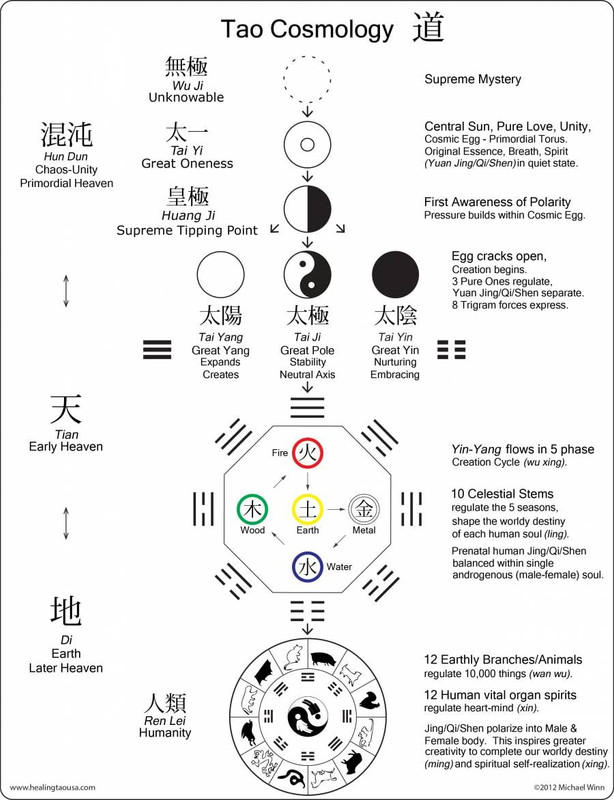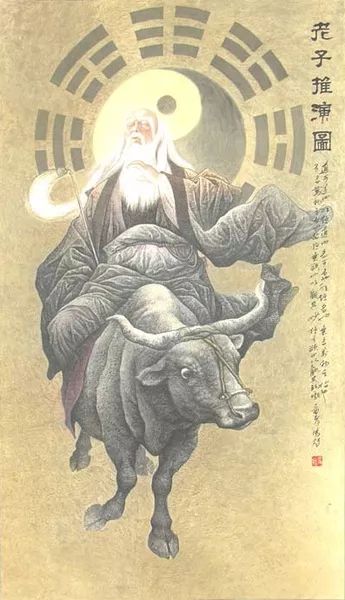



The Bagua or Pakua are eight symbols used in Taoist cosmology to represent the fundamental principles of reality, seen as a range of eight interrelated concepts. Each consists of three lines, each line either "broken" or "unbroken", respectively representing yin or yang, 0 or 1 forming binary numbers 000-111 (0 to 7). Due to their tripartite structure, they are often referred to as Eight Trigrams in English.
The trigrams are related to Taiji philosophy, Taijiquan and the Wuxing, or "five elements". The relationships between the trigrams are represented in two arrangements, the Primordial (先天八卦), "Earlier Heaven" or "Fu Xi" bagua (伏羲八卦), and the Manifested (後天八卦), "Later Heaven," or "King Wen" bagua. The trigrams have correspondences in astronomy, astrology, geography, geomancy, anatomy, the family, martial arts ,Chinese medicine and elsewhere.
The ancient Chinese classic, I Ching (Pinyin: Yi Jing), consists of the 64 pairwise permutations of trigrams, referred to as "hexagrams", along with commentary on each one.
The Limitless (無極; Wuji) produces the Delimited (有極; Youji), and this Delimited is equivalent to the Highest Limit (太極; Taiji), or the Absolute. The Taiji (i.e. the two opposing forces in embryonic, unmanifested form) produces two forms Liangyi (兩儀), namely yin-yang(陰陽), the manifested opposing forces. These two forms produce four phenomena: namely: lesser yin (少陰, shaoyin), and greater yin (太陰, taiyin, which also refers to the Moon); lesser yang (陽, shaoyang), and greater yang (太陽, taiyang, which also refers to the Sun). The four phenomena (四象; sìxiàng) act on the eight trigrams (八卦; Bagua). Eight 'eights' results in sixty-four hexagrams.

Magical and Ancient: The Shang Bronze Holy Tree





No comments:
Post a Comment
Note: Only a member of this blog may post a comment.